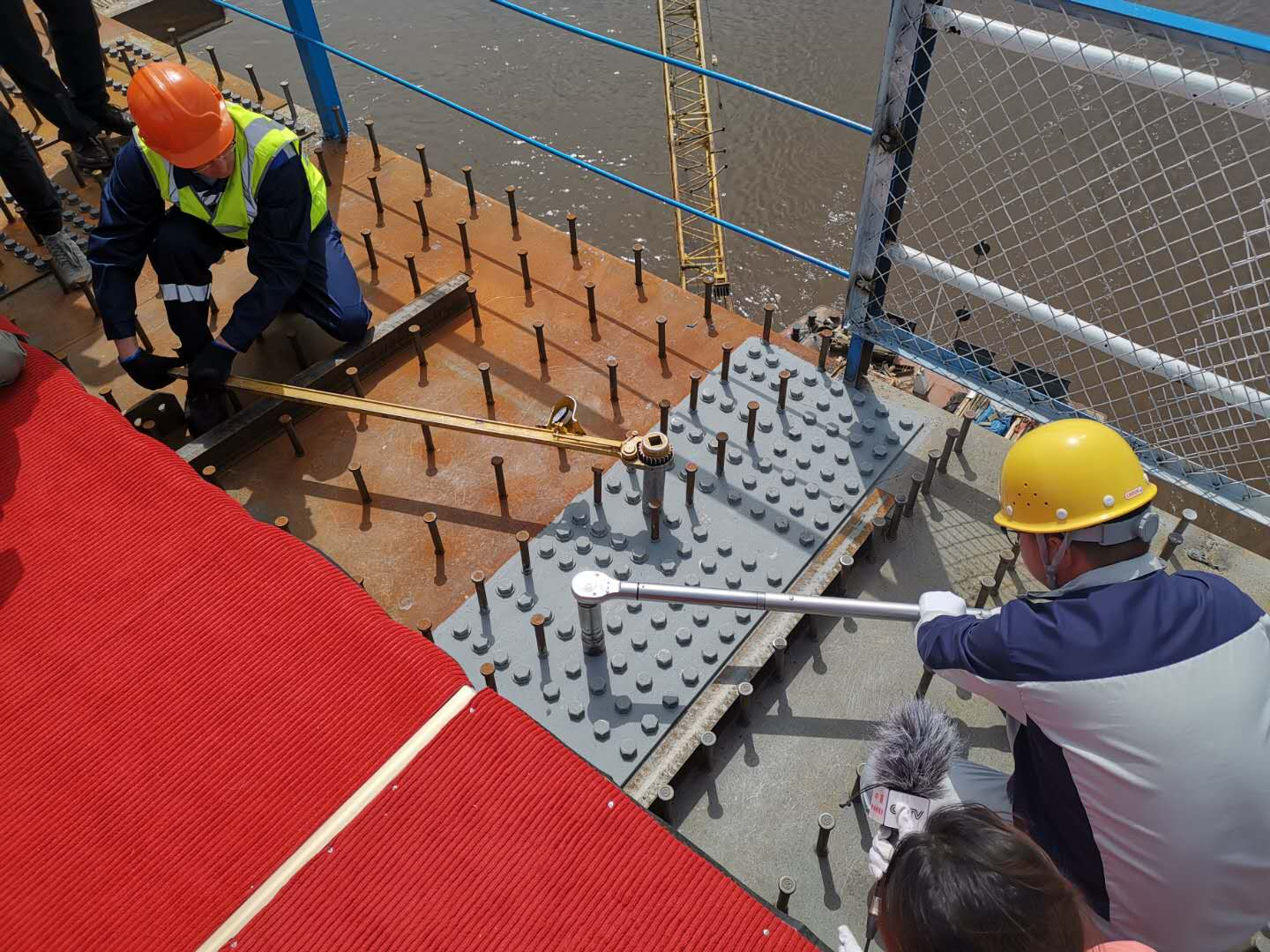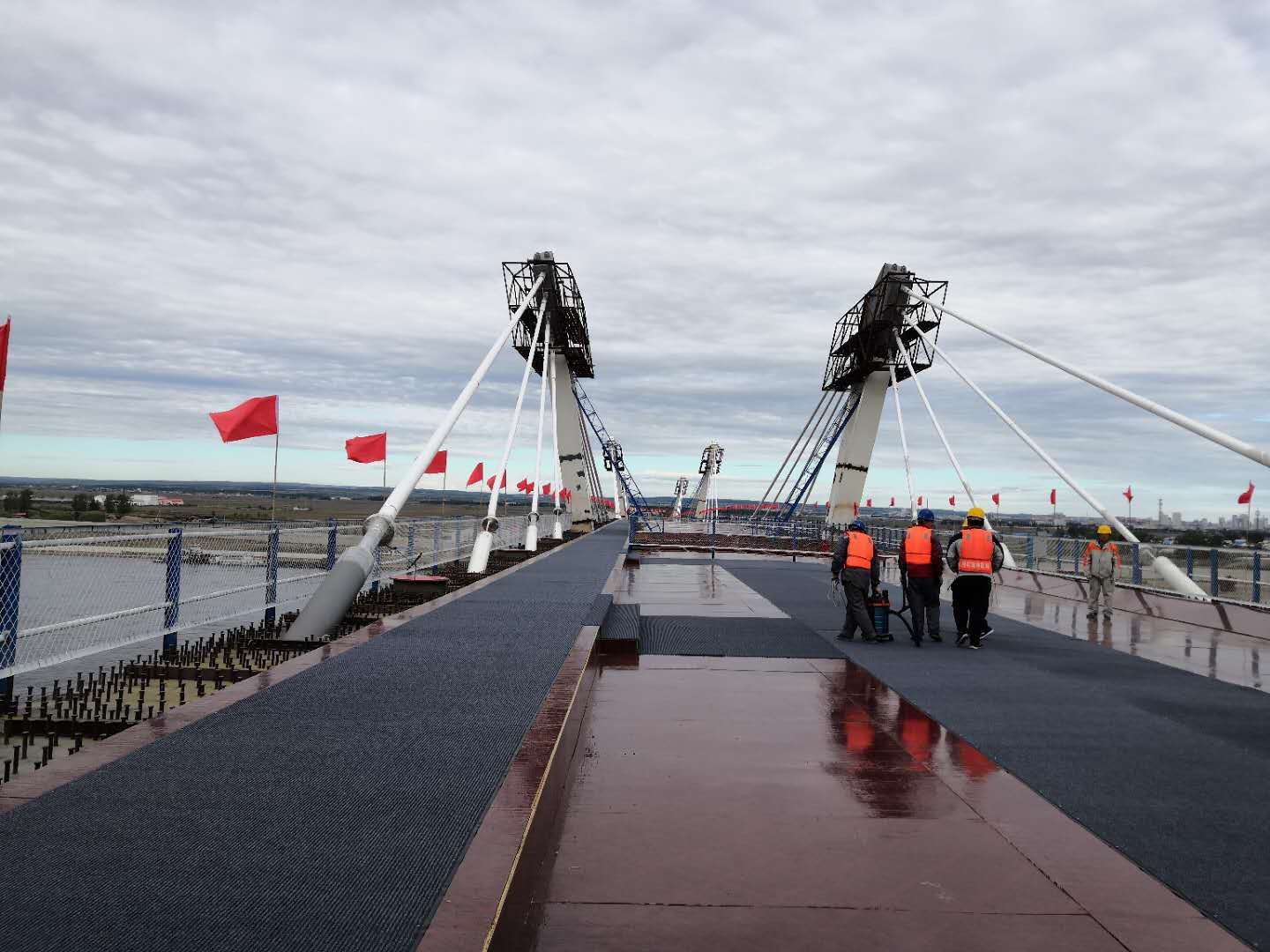
Asia Pacific
16:05, 31-May-2019
First Sino-Russian cross-border highway bridge connects
Updated
17:24, 01-Jun-2019
Yilei Feng
02:27

The first highway bridge over China's border river with Russia connected from both sides on Friday.
Constructors fastened the last two bolts at the connection point during a ceremony held at the border, before senior leaders of both countries announced that the long-awaited crossing finally links the "twin" trading cities of Heihe in China and Russia's Far Eastern city, Blagoveshchensk.
The bridge, roughly 1,300 meters long and 14.5 meters wide, is expected to be complete by the end of 2019, according to the transport department of Russia's Amur Oblast.

Constructors fasten the last two bolts of the bridge, May 31, 2019. /CGTN Photo
Constructors fasten the last two bolts of the bridge, May 31, 2019. /CGTN Photo
"Further work will be carried out within the contracted time and the main work will be completed by December 2019," the transport department said.
Once put into use, the bridge will reshape connectivity in the region. Huang Yunyong, general manager of the Sino-Russian joint venture operating the project, said the bridge is expected to be transporting more than 3 million tons of cargo and 1.4 million passengers annually by 2020.
It has been over 30 years since the two countries first proposed to build the bridge. The Amur Oblast state government put forward the proposal in 1988 to build a bridge with China, connecting the two countries and making it faster for cargo transportation and personnel exchanges.

Once put into use, the bridge will reshape connectivity in the region. /CGTN Photo
Once put into use, the bridge will reshape connectivity in the region. /CGTN Photo
Joint efforts have been made since then, and they overcame many difficulties, including extremely cold weather, different technical standards in both countries and funding issues.
The bridge, as well as a series of ongoing infrastructure projects in the Sino-Russian border area, are also significant parts of the Belt and Road Initiative and will be integrated into the China-Mongolia-Russia Economic Corridor.
The efforts are aiming to strengthen cooperation between the two countries and break the bottleneck of regional development.

SITEMAP
Copyright © 2018 CGTN. Beijing ICP prepared NO.16065310-3
Copyright © 2018 CGTN. Beijing ICP prepared NO.16065310-3